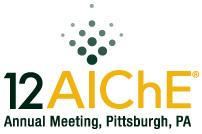
Session 10E05 presented design, implementation and use of the CAPE-OPEN standard. CO-LaN is grateful to the organizations that agreed to share their experience on CAPE-OPEN.
- Paper 263a: CAPE-OPEN Laboratories Network Status Report by Michel PONS, CO-LaN CTO
- Paper 263b: CAPE-OPEN Models for Hg Speciation and Partitioning Flowsheet Development by Megan Evans and Lloyd Brown. Megan is a staff process engineer at ConocoPhillips within the Integrated Modeling Team of Global Production Engineering – and a professional engineer with 17 years of industry experience.
- Paper 263c: Thermodynamic Models As CAPE OPEN Equilibrium Calculators by Cesar Pernalete and Jimmy Contreras. César is from the Process Modelling Group of PDVSA Intevep, the research center of PDVSA. This group has been working on CAPE OPEN since 2009.
- Paper 263d: Streamlining CAPE-OPEN Interoperability with Promax® by Michael W. Hlavinka, Jorge Martinis, Hugh Docherty, Mauricio Lopez and Christopher Skowlund. Michael is the Technical Director at Bryan Research & Engineering, managing all aspects of the design and development of their process simulation software, ProMax. Michael has worked for BR&E for 25 years. Over this time, he has worked in various roles supporting and managing the development of their process simulation software. He developed their first GUI for the earlier TSWEET and PROSIM packages—one of the first GUIs of its type in the PC simulation market. He has also done significant work in the areas of thermodynamic and physical property modeling, application architecture and infrastructure development, process simulation application, and software project management. Before joining BR&E, Michael was a researcher at the Texas Transportation Institute focusing on air pollution modeling. Michael holds a Ph.D. in Chemical Engineering from Texas A&M University and is a Licensed Professional Engineer in the State of Texas. He has served on committees in the Gas Processors Association and is a member of AIChE.
- Paper 263e: Petroleum Properties Via CAPE-OPEN: From Prototype to Commercial Application by Richard Baur (Shell), Ashok Dewan (Shell), Jasper M. Van Baten (AmsterCHEM), David H. Jerome (Invensys) and Krishna Murthy Penukonda (Invensys). Jasper is well known for his COCO suite of process modelling software and has been involved in multiple developments involving the implementation of CAPE-OPEN interfaces. Krishna Murthy is one of the developers at Invensys conducting the implementation and maintenance of CAPE-OPEN interfaces within PRO/II.
- Paper 263f: A CAPE-OPEN Unit Operation Software Component for Solving Chemkin Reactor Networks Inside Process Modeling Simulations by Tony Garratt and Chen-Pang Chou. After completing his PhD in Numerical Analysis at Bath University in 1991, Tony spent 15 years at AspenTech in Cambridge UK. During that time he worked on a variety of projects and process modeling tools and was part of the team that created the first version of Aspen Custom Modeler. He also worked on parameter estimation, dynamic optimization, Operator Training Simulation and AspenTech Open Solvers – a library of solver components based on interfaces very similar to those of CAPE-OPEN. Since 1997 he has been part of the development team at Reaction Design and we are going to hear about one of the key projects he has been working on that brings detailed kinetics technologies within the CAPE-OPEN Framework.
Session 10E07 discussed two proposals by CO-LaN: flowsheet monitoring interfaces and a CAPE-OPEN object model. Feedback from software developers and vendors was sought on these two proposals.
Eighteen people attended session 10E05 and twelve session 10E07.
